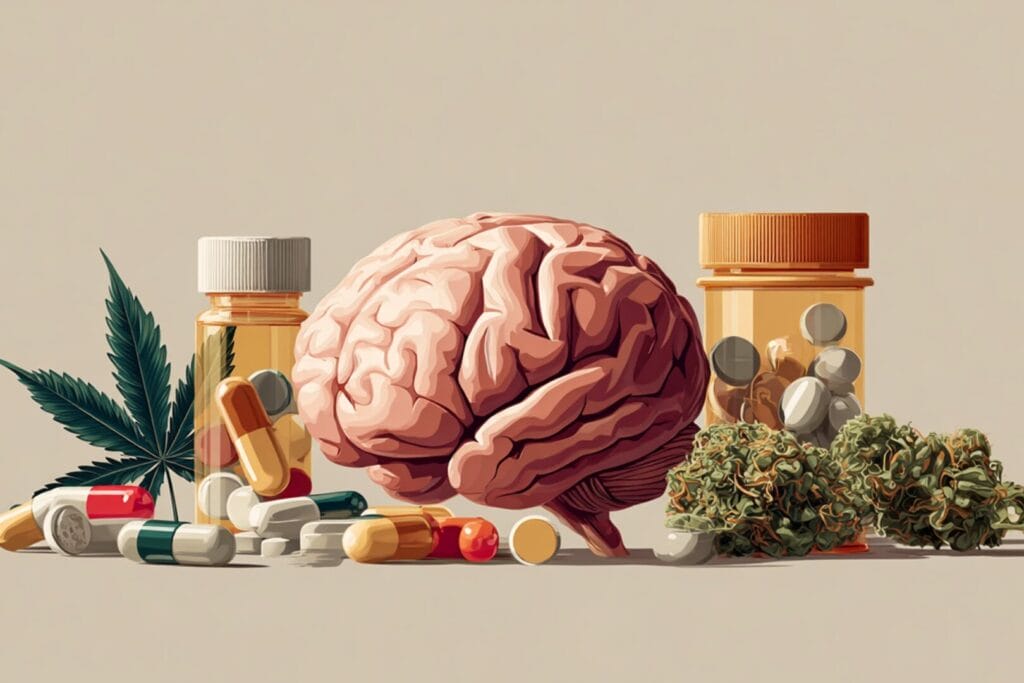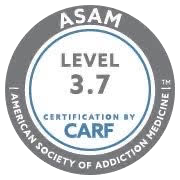What is Medication-Assisted Treatment?
Medication-assisted treatment (MAT) combines medications and counseling or behavioral therapies to provide a “whole-patient” approach to treating substance use disorders. Because medically assisted treatment is a relatively new treatment modality, you may be unsure of its effectiveness. Read on to find out more about MAT.
MAT Effectiveness
According to Dr. Nora Volkow, the National Institute on Drug Abuse director, “Studies have shown that outcomes are much better when you are on medication-assisted treatment. For one, it decreases the risk of relapse — significantly. Second, MAT has also been shown to prevent infectious diseases like HIV. Third, the medication-assisted treatment effectively prevents overdoses.” Again, MAT is regarded as an evidence-based treatment, which means that it has been proven that medically assisted treatment is clinically effective.
MAT Medications
Several medications have been approved by the Food and Drug Administration (FDA) to be used in MAT treatment. MAT medications can be used for:
- Alcohol Abuse: The most common medications used for alcohol addiction are acamprosate, disulfiram, and naltrexone.
- Opioid Abuse: In treating opioid abuse using MAT, medications such as buprenorphine and naltrexone are commonly used.
- Other Substances: Depending on the substance, your doctor can prescribe any FDA-approved MAT medications suitable for the substance.
Benefits of Medication-Assisted Treatment
To enjoy the benefits of MAT, you must be placed under a licensed MAT treatment program. These benefits include the following:
MAT Works
Ongoing and recent research has proven the effectiveness of using a medically assisted treatment for substance use disorder. This means that MAT indeed works.
MAT is Affordable
MAT treatment is affordable, and when compared to the cost of sustaining an addiction, MAT treatment is way cheaper and much more beneficial to you.
MAT Allows Greater Freedom
MAT allows you to return to your normal routine while still receiving medical and psychological care to help you adapt and recover more quickly.
MAT Can Be Part of a Greater Framework
A variety of holistic therapies can assist MAT and help it reach its full potential in more extensive and patient-centered programs.
MAT Can Bridge the Gap
When you continue with MAT treatment after your initial treatment, you’ll feel secure and strong enough to proceed in your recovery journey with less assistance.
Information About Medication-Assisted Treatment
If you’re skeptical about engaging in a licensed MAT treatment program, this additional information might convince you.
Prevent Relapse
When used in conjunction with integrated treatment modalities that address other health factors, MAT can help avoid relapse and allow for more extended periods of sobriety.
Normalize Brain Chemistry
Medication-assisted treatment for opioid use disorder and alcohol addiction can assist persons in maintaining recovery until their brain structures and functions return to normal.
Block the Euphoric Reaction of Substances
Some MAT medications work by blocking the euphoric reaction induced by substances to prevent relapse.
Alleviate Withdrawal Symptoms
Medication-assisted treatment for opioid use disorder works to gradually wean patients off the narcotics so that the detox process does not surprise their bodies. Medication-assisted treatment for alcohol addiction is also effective in alleviating withdrawal symptoms.
Reduce Cravings
MAT programs can help you overcome intense cravings through MAT medications.
Help Facilitate Therapy
As a result of MAT medications, patients are in a better place to welcome therapy.
How Does Medication-Assisted Treatment Work?
There are two ways MAT treatment can be implemented:
- Doctors can prescribe opiates that activate the same receptors but take longer to absorb into the bloodstream, preventing withdrawal symptoms and breaking the psychological association between taking a drug and feeling euphoric right away, or,
- Doctors can also prescribe an opioid antagonist, which is a non-opioid medicine that binds to the same receptors as opioids and blocks them so that if someone relapses, they won’t feel anything.
Below are what follows when one is placed on a MAT treatment program.
Increased Treatment Success Rate
The likelihood of treating substance use disorder is high with MAT treatment. Sometimes, the treatment plan can last years to allow more time for recovery.
Decreased Likelihood of Relapses
Of all people placed in a MAT treatment program for specific research, a good number of them reported abstinence from the drugs after different periods.5 This further proves that MAT treatment works effectively in reducing relapse rate.
Increase the Patient’s Chances of Survival
MAT medications and therapy work so that patients can stay longer in treatment, increasing their chances of survival.
Reducing the Risk of HIV, AIDS, and Hepatitis C
Hepatitis C and HIV are blood-borne diseases primarily transmitted through injection drug use. MAT is thought to reduce injection frequency, lessening the risk of contracting such diseases.
Increased Ability of Patients to Retain Jobs and Enjoy a Social Life
Patients on MAT treatment programs can better manage their jobs as the treatment helps them get back to carrying out their daily activities and interactions with more ease.
Types of MAT Medications
The various medications used in MAT treatment are given below:
- Buprenorphine: Approved by the FDA, buprenorphine is an opioid partial agonist.
- Naltrexone: Naltrexone is a non-opioid used for alcohol addiction treatment and opioid abuse treatment. The FDA approves it, and it works by blocking the sedative and euphoric effects of opioids.
- Naloxone (Narcan): Naloxone is an opioid antagonist used in MAT treatment to reverse opioid overdose effectively.
- Acamprosate: Acamprosate is a medication for alcoholism for people in recovery. In alcohol addiction treatment, acamprosate does not prevent withdrawal symptoms. It just works to prevent relapse for people in recovery.
Acamprosate is usually used in conjunction with disulfiram in medication-assisted treatment for alcohol.
Common Misconceptions of MAT Treatment
Here are nine misconceptions you may hear from misinformed people about MAT treatment:
MAT is Trading One Addiction for Another
Some claim that taking a drug like methadone daily automatically indicates you are addicted to it. MAT medication helps those trying to stop using substances of abuse by maintaining the mental and emotional stability needed for other areas of recovery.
MAT is Only for Short-Term Treatment
MAT treatment can be used for however long the patient needs to recover fully. Some people may require more extended periods to recover, and MAT treatment is flexible enough for any duration.
My Addiction Does Not Warrant MAT Treatment
Opioid use disorder is classified as mild, moderate, or severe in the Diagnostic and Statistical Manual of Mental Disorders, Fifth Edition (DSM-5). However, all levels of addiction require treatment. Therefore, however mild your addiction is, you must start treatment. A quick search on Google for “MAT treatment near me” will show results of several centers offering both outpatient and inpatient MAT treatment.
MAT is Harmful
The National Institute of Health (NIH) looked at data from more than 17,500 persons in Massachusetts who had survived an opioid overdose between 2012 and 2014. Deaths from overdose were reduced by 38% in individuals taking buprenorphine and 59% in those getting methadone compared to those who did not receive any MAT. In summary, MAT is far from being harmful when administered right.
MAT is Worse Than Abstinence
It is false to promote abstinence as better or more effective than MAT. Even the FDA enormously facilitates the research and development of new MAT drugs because MAT is so much more effective.
Most Insurance Does Not Cover MAT Treatment
The Affordable Care Act made it mandatory for most insurers to cover addiction treatment. In many cases, medication-assisted treatment is included. Depending on your plan, your insurance may cover a part or all the cost.
Cold Turkey is Better Than MAT
Going cold turkey cannot combat withdrawal symptoms that can be excruciating, nor can it reduce cravings. Therefore, this claim is null.
Pregnant Women Cannot Receive MAT
MAT treatment improves birth outcomes among women with substance use disorder. The American College of Obstetricians and Gynecologists (ACOG) approves MAT as the recommended treatment for pregnant women with opioid use disorder. Even breastfeeding, it has been certified safe to continue MAT medications like buprenorphine.
Breaking the Stigma: The Truth About MAT and Your Path to Recovery
When myths about Medication-Assisted Treatment create fear or confusion, San Diego Detox stands as a beacon of clarity, compassion, and clinically backed support. Rooted in our philosophy of holistic, individualized care, our approach combines evidence-based MAT with therapy, wellness services, and upscale amenities designed to nurture healing on all levels. We believe every recovery journey is unique—and that choosing MAT isn’t a shortcut, but a powerful tool toward lasting sobriety under expert supervision.
We’re here to guide you forward. Reach out today – whether for yourself or someone you care about and let us answer your questions, help explore your options, and begin crafting a plan tailored to your needs. Contact us anytime to learn more; compassionate support is just a conversation away.
Resources
- https://www.niaaa.nih.gov/alcohols-effects-health/overview-alcohol-consumption/what-standard-drink
- https://www.drugfreeworld.org/drugfacts/alcohol/short-term-long-term-effects.html
- https://www.ncbi.nlm.nih.gov/pmc/articles/PMC2913110/
- https://www.webmd.com/mental-health/addiction/understanding-alcohol-abuse-symptoms
Frequently Asked Questions about MAT
Medication-Assisted Treatment (MAT) is an evidence-based treatment approach that combines FDA-approved medications with counseling and behavioral therapy to treat substance use disorders.
MAT works by reducing withdrawal symptoms, managing cravings, blocking the euphoric effects of opioids or alcohol, and restoring brain chemistry — providing stability while a person participates in behavioral therapy and rebuilds their life.
No — when taken as prescribed under medical supervision, MAT medications do not produce a “high.” Instead, they stabilize brain chemistry, reduce cravings, and allow individuals to focus on recovery rather than substance-seeking behaviors
Yes — MAT isn’t limited to opioids. For alcohol use disorder, several FDA-approved medications are commonly used under MAT to reduce cravings and help maintain sobriety.







